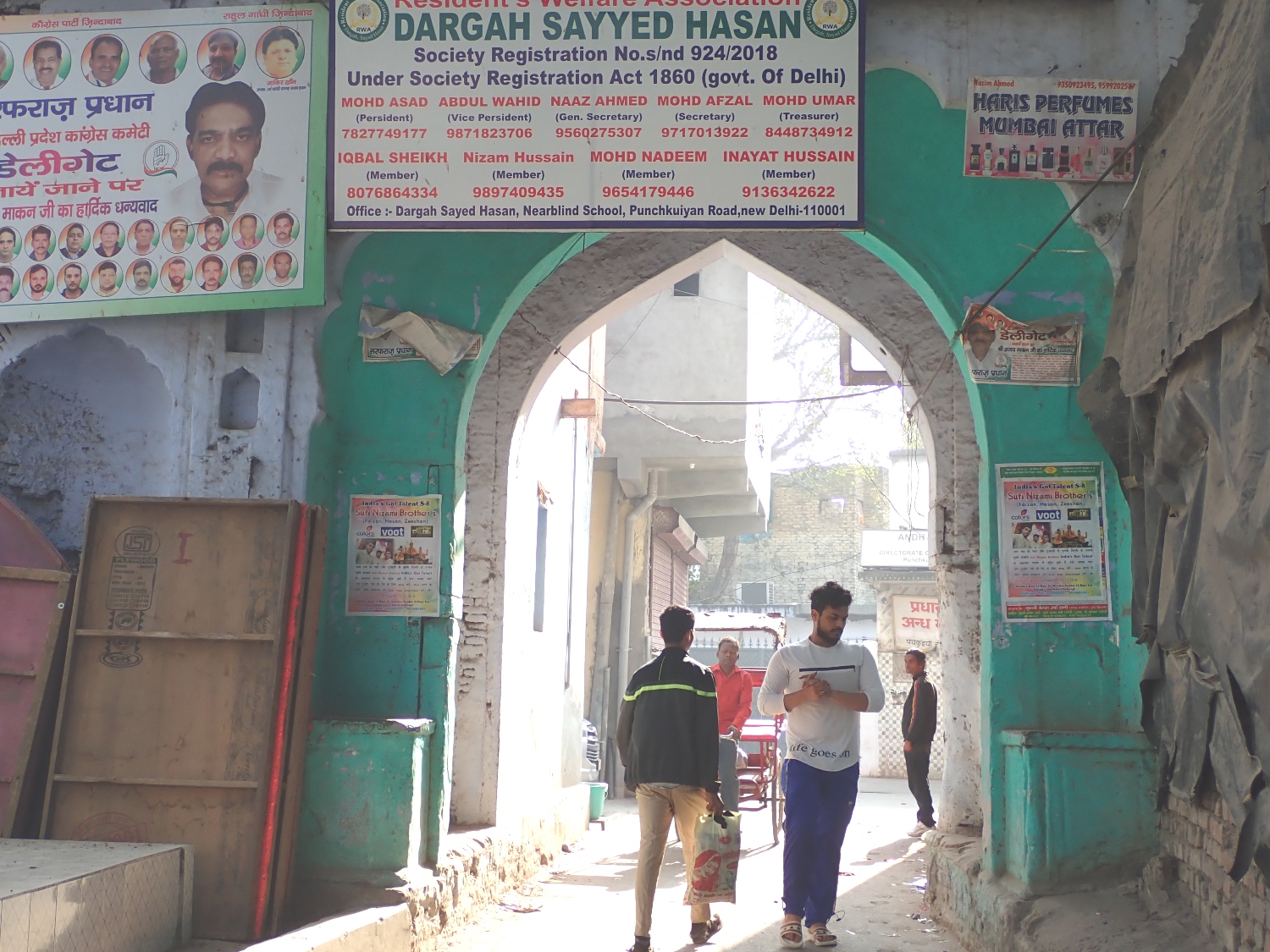
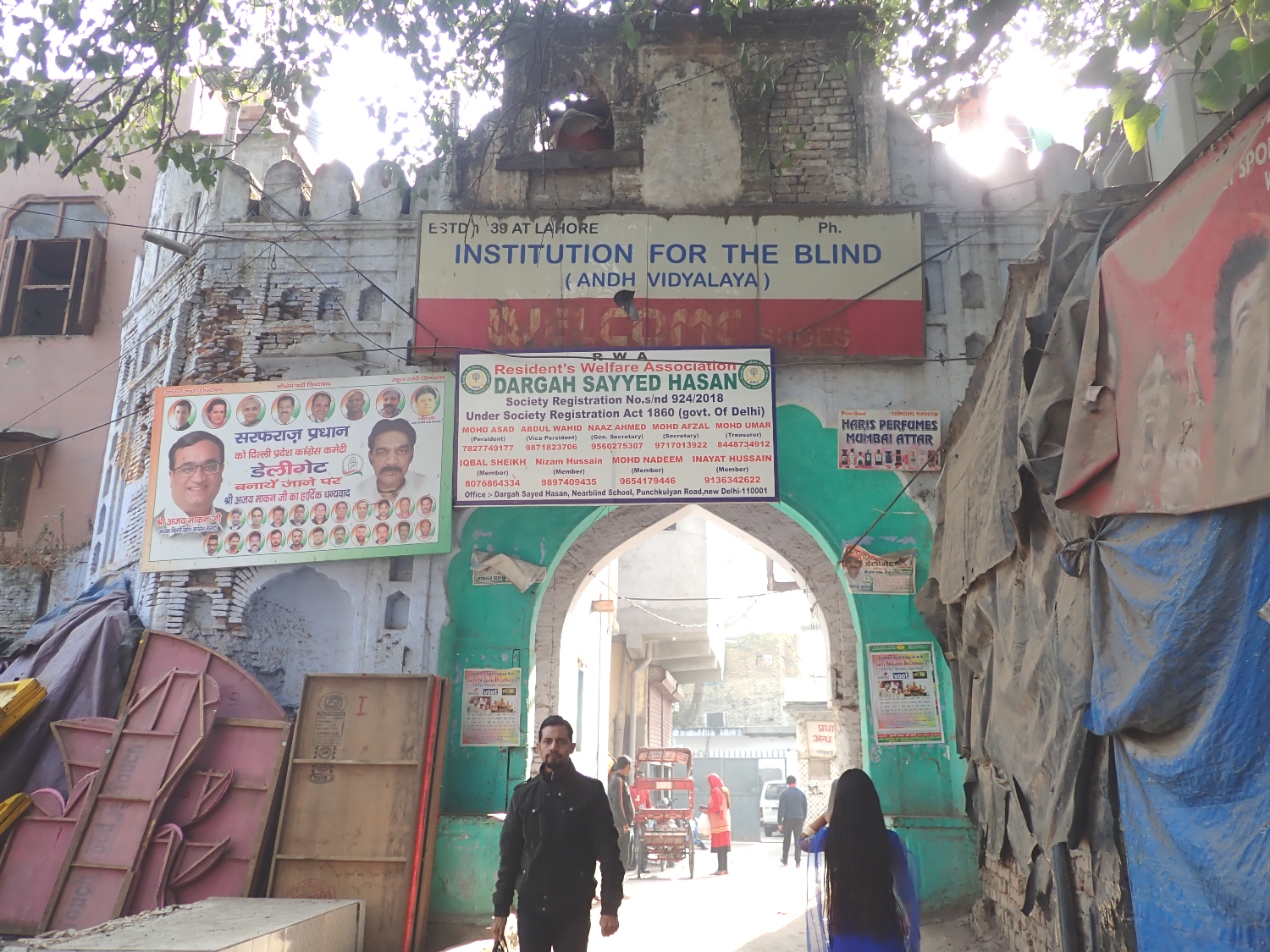
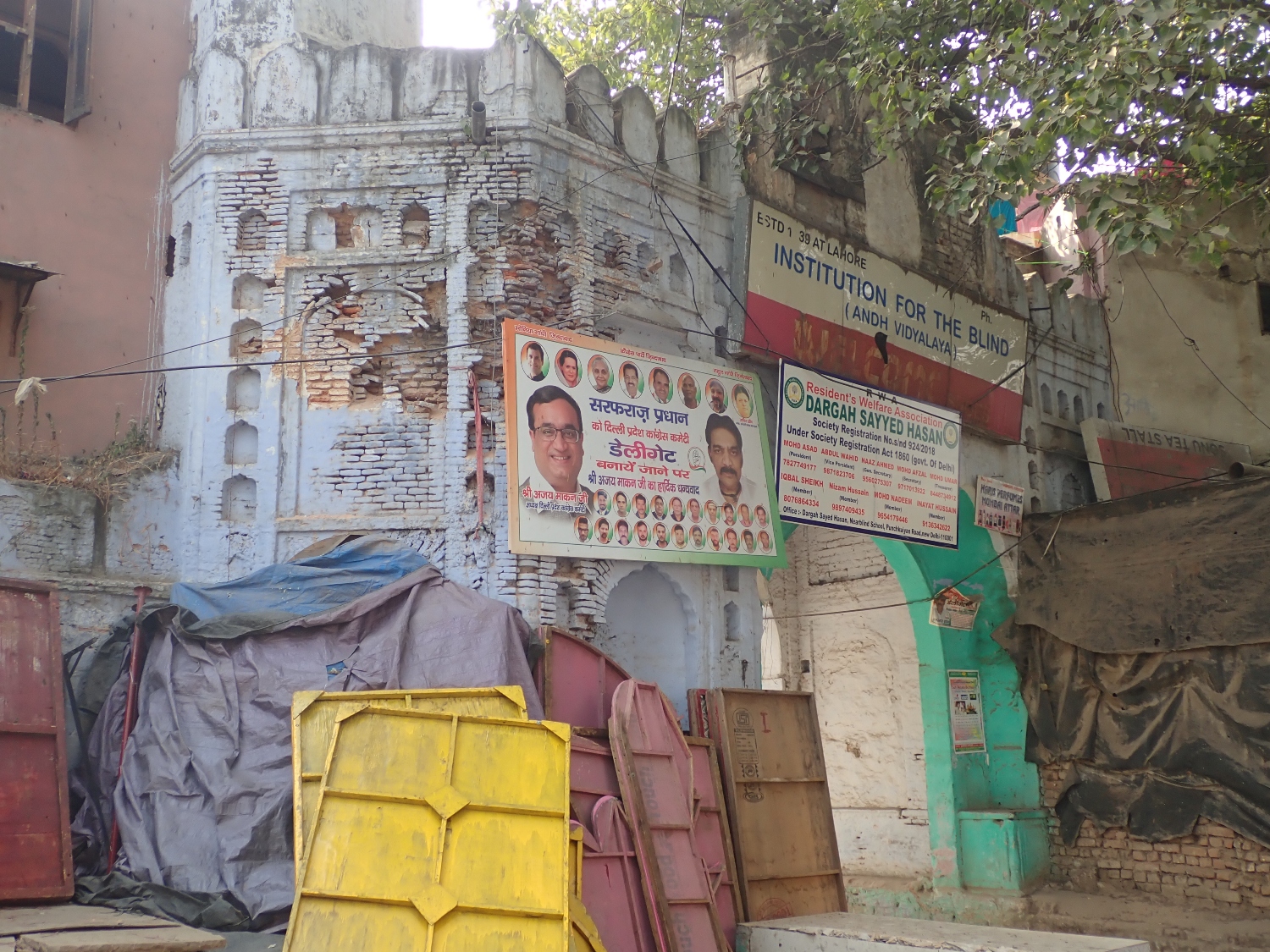
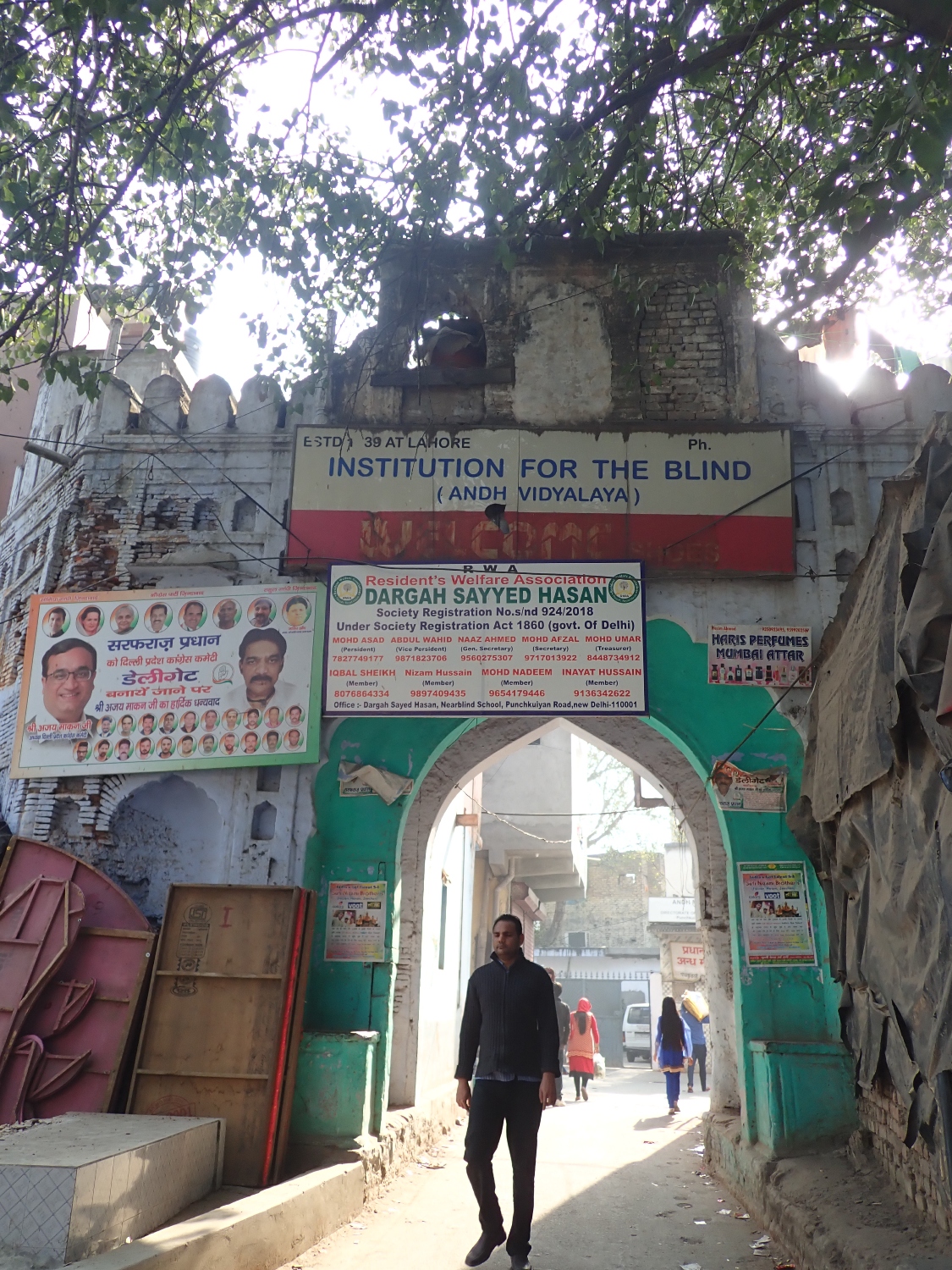
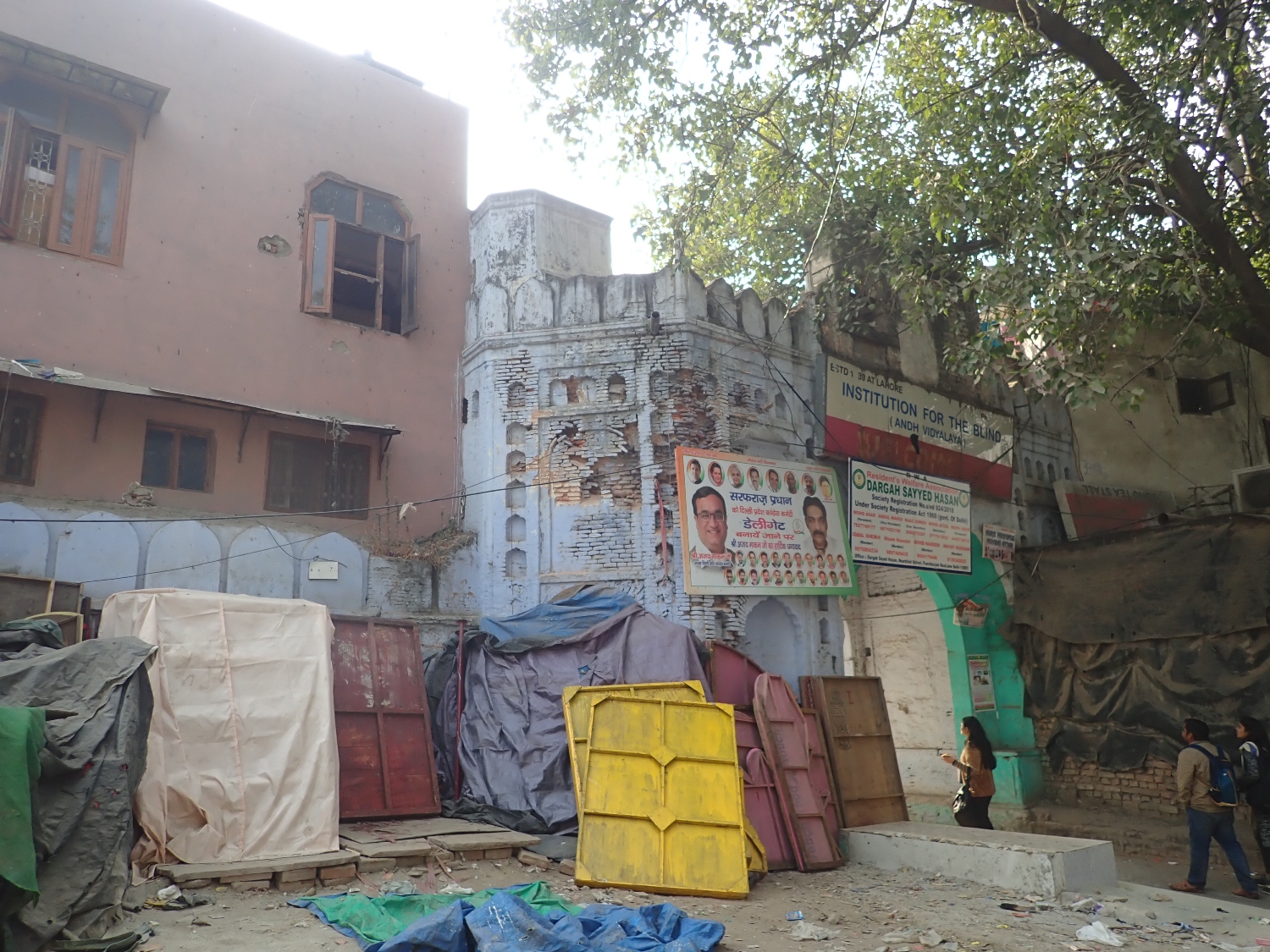
This gateway near Panchkuian was constructed during the reign of Mughal Emperor Aurangzeb in the later phase of the Mughal period. The gateway likely served as a ceremonial or functional entrance to an important urban or residential area, reflecting the architectural style prevalent in Aurangzeb's era. Local/Traditional Description Associated with the Site There are no notable local or traditional descriptions currently associated with this structure, indicating its functional use rather than a symbolic or religious role. Architectural Style Indo-Persian Style: The gateway combines Persian design principles with local Indian craftsmanship, a characteristic feature of late Mughal architecture. Description of Building/Structure/Site Structural Layout: Pointed Arch Opening: The central feature of the gateway, emphasizing verticality and grandeur. Flanking Niches: Multiple pointed arched niches are symmetrically placed on either side of the central opening, enhancing its aesthetic appeal. Kangaroos: Adorning the top of the gateway, these are either decorative elements or may symbolize specific associations during its period of construction. Encroachments: The sidewalls of this significant structure are encroached upon, diminishing its heritage value and accessibility. Structure Materials and Components Primary Materials: Lakhori brick masonry: A quintessential Mughal-era material known for its durability and fine finish. Lime mortar: Used for plastering, ensuring structural integrity and a smooth facade. Decorative and Structural Elements: Red Sandstone: Applied at the lintel level, brackets, and cornice, providing both decorative richness and structural support. Current Condition and Challenges Encroachments: The gateway’s sidewalls are encroached upon, which threatens its structural stability and historical significance. Unprotected Status: It lacks formal protection or conservation measures, leaving it vulnerable to damage and neglect. Significance This gateway stands as an example of the architectural transition during the later Mughal era under Aurangzeb, showcasing utilitarian and aesthetic elements of the Indo-Persian style. Its strategic location near Panchkuian suggests historical relevance to the local urban layout. For more detailed historical context, further archaeological surveys or archival research could uncover additional insights into its role and significance.